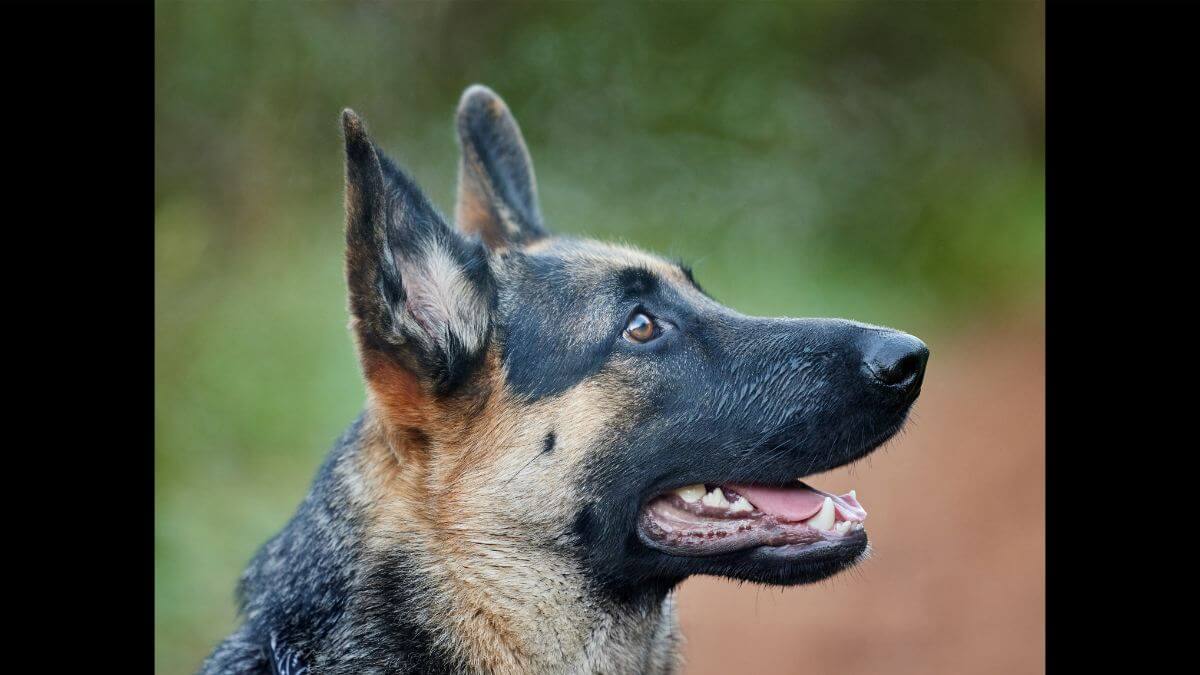
Home » Judging the German Shepherd Dog The World’s Most Versatile & Greatest Purebred Dog

This article was originally published in Showsight Magazine, September 2020 issue.
There are three phases involved in judging the breed:
A very specific temperament test is required of all judges presiding at our specialty shows. The judge approaches the entry for the first contact with the dog standing on a loose leash, with no double handling. The dog must not show any fear, apprehension, or aggressiveness. The same procedure is done for each entry.
We must insist on sound temperament to continue the functionality of our breed. If the temperament is not sound, the dog must be excused from the ring.
The standing pose must exhibit what the standard implies within the specified parameters. Motion is judged as with any other breed, coming and going, as well as side gait.
With these in mind, it is important to read and understand our standard. The standard is very detailed and should be reviewed before every assignment. We have objective parameters, but some degree of subjectivity must exist in each judge’s hands.
HISTORY
As its name implies, the breed began in Germany with founders Herr Artur Meyer and Captain Max von Stephanitz. These men were looking to create the perfect, most versatile dog known. Its functions were to be of service to mankind, which today it has lived up to many times over. This is a tribute to the breed’s founders and the generations after them.
Herding stock from different regions in Germany were combined to form the German Shepherd’s origin. The first registered animal was named Horand von Grafrath.
The German Shepherd Dog Club of Germany, or Verein für Deutsche Schäferhunde, was founded in 1899. It is still recognized as the largest and most influential club of our breed, with membership worldwide. The club’s membership has surpassed 100,000 members at times.
The largest German Shepherd specialty show in the world is held each year at various locations in Germany to determine the best from entries worldwide. In 2012, this show had 1,531 entries in conformation alone!
The classes begin with sexes judged separately, and they never compete with each other. Unlike our shows, only three classes exist: 12-18 months, 18-24 months, and open (24 months and older), with a winner sieger in each class. Now, there are separate classes for properly long-coated dogs.
All entries must have hip and elbow certification, and the open classes must have working titles (sch, ipo, or hgh-herding), with herding dogs judged separately in conformation.
The German Shepherd Dog Club of America was founded in 1913 on the East Coast by a group of influential owners and breeders. Its goals and purpose exist today in the hands of a very devoted board and membership that numbers in the thousands—“the keepers of the breed.”
Each year, our national specialty has many events besides conformation. These include obedience, herding, and many other performance events.
At our centennial show in 2013, we recognized and honored the armed services war dogs and handlers. This was a tribute to our breed’s worthy existence and the service they provide to our country on a daily basis.
JUDGING
We can’t stress enough how important it is to read the standard and read it again and again. This will help you understand this wonderful breed. You, the judges—both all-breed and specialty—control our destiny. You must take this responsibility seriously, as I know you will.
The anatomy of the breed is functional as well as aesthetically pleasing. Strong secondary sex characteristics are essential, as we do not have a “unisex” breed. It should be easily determined if the dog is a male or a female without looking at sexual anatomy.
The male is distinctly masculine, with a broad backskull, a strong muzzle, and an underjaw with strong teeth numbering forty-two. Serious faults include more than one missing premolar. The females have an equally strong head and muzzle, but they are feminine in appearance.
The topline is smooth, with no sag or roach, and it has equal proportions of wither, back, and croup. The back should be short and straight. Remember that the back is the portion between the wither and croup and is not the topline or overline. The wither represents the highest part of the topline and gradually slopes into the back. This, in turn, gradually slopes into the croup, which should be approximately 23 to 27 degrees.
The croup should be judged in motion, as the angle varies according to the hindquarter placement set by the handler. The overall appearance of the topline or overline is one of smooth, flowing curves with no break. We say a dog is long if these proportions are not equal. It is considered stretched if the proportions are equal but slightly lengthened.
Judging begins with the overall appearance, starting at the nose and ending at the tip of the tail. Forehand angulation is approximately 90 degrees. With the dog standing four square, the hindquarter angle is the same. However, in the typical show stance, the hindquarter angle becomes approximately 120 to 130 degrees.
The underline should be as long as possible, with a small degree of tuck-up that is age-dependent. The loin should be short.
Pasterns are approximately 25 degrees, and the feet are short and compact. The long bones, when viewed from the front, should be absolutely straight and approximately one foot width apart when standing naturally. The pasterns should be well-formed and strong, with short and powerful hocks.
Pigmentation should be strong and rich, with dark eye color. The ears should be fully erect and approximately perpendicular to the skull, closely parallel to each other.
Much has been discussed about the motion of the breed. It has a characteristic gait sequence similar to other breeds, but it is more extreme.
The natural gaits of the German Shepherd Dog are walk, slow-to-medium trot, and gallop. There is nothing in the standard that mentions the “flying trot,” which, in most cases, has been taken completely out of context.
Our breed, in motion, can best be described as having a very powerful gait that is buoyant and suspended. There is tremendous power generated from the hindquarters, which is transmitted over a very strong back to the forehand. The forehand reaches to the nasal tip and remains very close to the ground without lifting.
An analogy is that the hindquarters act as the engine, the back serves as the transmission, and the forehand functions as the steering mechanism. The hindquarters generate approximately 97 percent of the power in motion, with the forehand contributing three percent to the forward thrust. The last ounce of power from the hindquarters is visible with the last flip of the rear foot as it extends back before starting its forward motion.
The racing gait that some find exciting and crowd-pleasing is really incorrect. As mentioned, the slow-to-medium trot is the correct gait. Suspension and buoyancy can be seen without racing around the ring, and judges should insist on the proper gait. If this were the case, many owners could show their own dogs without needing to “keep up.”
The dog single tracks in motion and is naturally coordinated in all phases of its gait. It covers as much ground as possible with no wasted motion, moving seemingly effortlessly—that is the German Shepherd Dog!
Proper anatomy results in proper movement. The German Shepherd Dog is a trotting breed that can herd sheep all day, scale a fence with little effort, search a building, and apprehend a criminal without endangering its officer. It can patiently guide a blind person through a maze of traffic, play ball with a child, and sleep next to you when you are feeling terrible. The dog knows it is needed to watch over you without being told. This is the German Shepherd Dog.